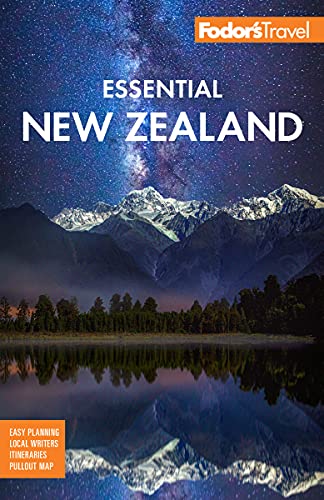Eating in New Zealand
The New Zealand food and wine scene had an earthy beginning. Traditional Māori staples included fish, birds, and root vegetables like kūmara (sweet potato) cooked slowly in an underground oven known as a hāngi. With the Europeans came livestock (sheep, cattle, and pigs) and a meat-and-potato diet. However, the past 30 years have seen a growth spurt in the New Zealand food and wine industries. Farmers and consumers are quickly developing a taste and reputation for sustainable, seasonable fare, and more and more chefs have incorporated foreign influences into local cuisine.
New Zealand food has been described as "Pacific Rim" or "Pacific Rim fusion," which is an expansive term that incorporates Asian and Pacific Island influences with traditional European-style mainstays. Breakfast includes eggs, muesli, and fruit. Sandwiches and sushi are common lunches, and Indian food, seafood, fish-and-chips, and game meats (steak, boar, and venison) are common for dinner. Although vegetarian restaurants are rare, most restaurants serve vegetarian options.
Not much cuisine is unique to New Zealand, although it’s well known for pavlova (meringue topped with cream and fruit), hokey pokey ice cream (vanilla with golden toffee), hāngi, and Manuka honey.
Dinner is usually around 5:30–9:30, although cafés are open from 7 to 4. If you miss dining hours, supermarkets and dairies (corner stores) are usually open until 10. In a café, a meal will run you about NZ$20, a mid-range restaurant NZ$30, and an upscale NZ$35 and up.
Seafood
New Zealand has some of the largest fishing grounds in the world, so seafood is a must-have. Greenshell mussels, often cooked with lemongrass and coconut, are large and succulent. Bluff Oysters are pulled from the deep waters off the South Island late March to late August. Paua (abalone mother of pearl) are also abundant along the coast, as are crayfish (rock lobster) and hundreds of fish varieties, including Marlborough-farmed salmon, trout, and terakihi. A local favorite is whitebait, a small fish caught in rivers and marine estuaries from August to November.
Fruits and Vegetables
Kiwis are also known for their kiwifruits and other fresh produce, such as olives, citrus fruit, and green vegetables. The best produce is found at roadside stalls or farmers' markets, which have become hugely popular weekend morning haunts. Favorite markets include the Hawke's Bay Farmers’ Market, the Wellington Harbourside Market, and the Nelson Farmers’ Market @ Founders.
Wine, Beverages, and Festivals
New Zealand's wine industry has flourished along with its cuisine. Marlborough produces award-winning Sauvignon Blancs, and Pinots and Chardonnays are also making names for themselves. Wines are reasonably priced and boutique vineyards are inviting.
There's also a variety of quality beers, microbrews, and liquor: check out 42 Below vodka in flavors like feijoa and Manuka honey. Coffee is serious business, alongside the burgeoning café culture. Flat whites (steamed milk over a shot of espresso) are the favorite. Kiwis take their tea British-style, with milk, so order it black if that’s your preference.
Kiwis love to combine quality cuisine with a good party. Hokitika Wildfoods Festival, Toast Martinborough, the Bluff Oyster & Southland Seafood Festival, Auckland's Devonport Food, Wine and Music Festival, the Gisborne Wine & Food Festival, and Harvest Hawke's Bay Wine and Food Festival are just a few local celebrations.




